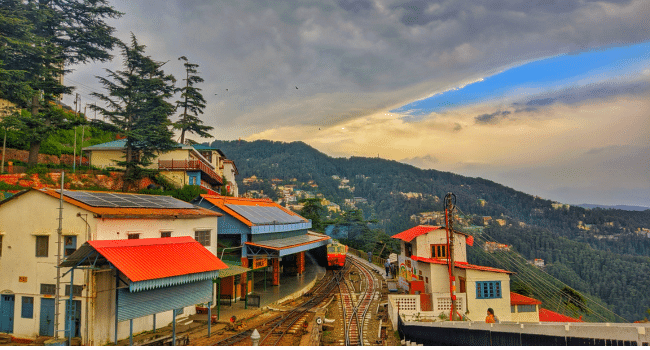Table of Contents
Italy is a country where culture is not simply found in galleries or monuments—it’s lived every day in its streets, cuisine, traditions, and rhythm of life. From Roman ruins to Renaissance masterpieces, from opera houses to vibrant street scenes, Italy’s cities are bursting with artistic legacy and historical depth. Whether you’re a history buff, a foodie, or an art lover, these five cities—Rome, Verona, Florence, Naples, and Palermo—offer rich and diverse cultural experiences. Each destination reflects a different face of Italy, rooted in its past and expressive in the present. Here’s a guide to five unforgettable cultural city trips across the Italian peninsula, each worthy of a place on your travel list.
Rome
No cultural journey through Italy would be complete without Rome, the eternal city where ancient ruins stand beside Renaissance churches and Baroque fountains. Rome’s layers of history are unmatched, from the Colosseum and Roman Forum to the Pantheon, still standing nearly 2,000 years after it was built. What to do in Rome Italy? Walk through the Vatican Museums, home to the Sistine Chapel and Raphael Rooms, and marvel at the scale and artistry of St. Peter’s Basilica. But beyond the grand monuments, Rome’s culture thrives in its daily life: locals chatting in piazzas, the aroma of espresso wafting from tiny cafés, and evenings spent dining al fresco in Trastevere. Each neighborhood has its own character and charm, and part of Rome’s magic is simply wandering—stumbling across quiet churches filled with Caravaggio paintings or ruins tucked between modern shops. With every turn of a cobbled street, Rome tells the story of Western civilization in stone, color, and spirit.
Verona
Head north to Verona, a smaller and often overlooked gem that blends Roman history, medieval architecture, and operatic romance. Most famous as the setting of Shakespeare’s Romeo and Juliet, Verona charms visitors with its poetic ambiance and beautifully preserved center, which is also a UNESCO World Heritage Site. The city’s cultural heart is the Arena di Verona, a Roman amphitheater that still hosts grand opera performances each summer, where Puccini and Verdi echo through ancient stone under the stars. Stroll across Ponte Pietra, a Roman bridge that leads you to stunning views and hidden hillsides, or climb to Castel San Pietro for a sweeping panorama of the Adige River and tiled rooftops. Verona’s churches—like the majestic Basilica di San Zeno—and its well-preserved frescoes tell stories of Northern Italy’s artistic flowering in the Middle Ages. The atmosphere here is more intimate than in Italy’s bigger cities, and that closeness makes Verona an ideal destination for travelers seeking rich history without the rush.
Florence
Just a couple of hours away lies Florence, the cradle of the Renaissance and a city that changed the course of Western art and thought. Things to see in Florence? Walking through Florence is like stepping into a vast open-air museum, where every building tells a story. The Uffizi Gallery holds masterpieces by Botticelli, Michelangelo, and da Vinci, while the Accademia houses Michelangelo’s David, a sculpture so iconic it draws millions of visitors on its own. The city’s architecture is equally breathtaking: the Duomo’s red dome, designed by Brunelleschi, dominates the skyline, while Palazzo Vecchio and Ponte Vecchio reflect Florence’s golden age of power and creativity. Florence is also a city of thinkers—Dante, Galileo, and Machiavelli all walked these streets. Today, the intellectual and artistic heritage continues in its universities, artisan workshops, and vibrant food markets. With its mixture of elegance, history, and human genius, Florence is a must for anyone wanting to understand Italy’s central role in European culture.
Naples
For a more visceral and vibrant slice of Italian culture, head south to Naples, one of Europe’s oldest continuously inhabited cities and the birthplace of pizza, passion, and the Italian soul. Naples is bold, noisy, and alive in every sense. Its historical center is a UNESCO site, where Gothic cathedrals and Baroque palaces mix with Roman ruins and underground tunnels. Culture in Naples is not behind glass—it’s lived in its street art, in spontaneous music, in family-run pizzerias where recipes haven’t changed in generations. Visit the Museo Archeologico Nazionale, one of the world’s top collections of Greco-Roman antiquities, including artifacts from nearby Pompeii. For something different, tour the haunting San Gennaro Catacombs or explore the volcanic Phlegraean Fields. And don’t miss a performance at the Teatro di San Carlo, Europe’s oldest opera house still in operation. Naples offers an intense, emotional immersion into the chaotic beauty of southern Italy, where life is full of contradictions—and full of life.
Palermo
Crossing the sea to Palermo, Sicily’s capital, is like stepping into another world entirely—one shaped by millennia of cultural crossroads. With influences from Greek, Roman, Arab, Norman, and Spanish rule, Palermo is a city where East meets West in stunning, unpredictable ways. The architecture tells this story vividly: the gold mosaics of Palatine Chapel, the Byzantine domes of San Giovanni degli Eremiti, and the Arabesque designs of La Zisa Palace all coexist within walking distance. Palermo is also a street food capital: try panelle (chickpea fritters), arancine (fried rice balls), and cannoli in lively local markets like Ballarò or Vucciria. Beyond its culinary treasures, the city has a deep intellectual and artistic heritage, from its puppet theater traditions to the masterpieces housed in the Regional Gallery of Sicily. Palermo’s cultural richness is layered, vibrant, and deeply tied to the identity of southern Italy. It’s a place where history isn’t frozen in time but constantly evolving—and that makes every visit feel new.
